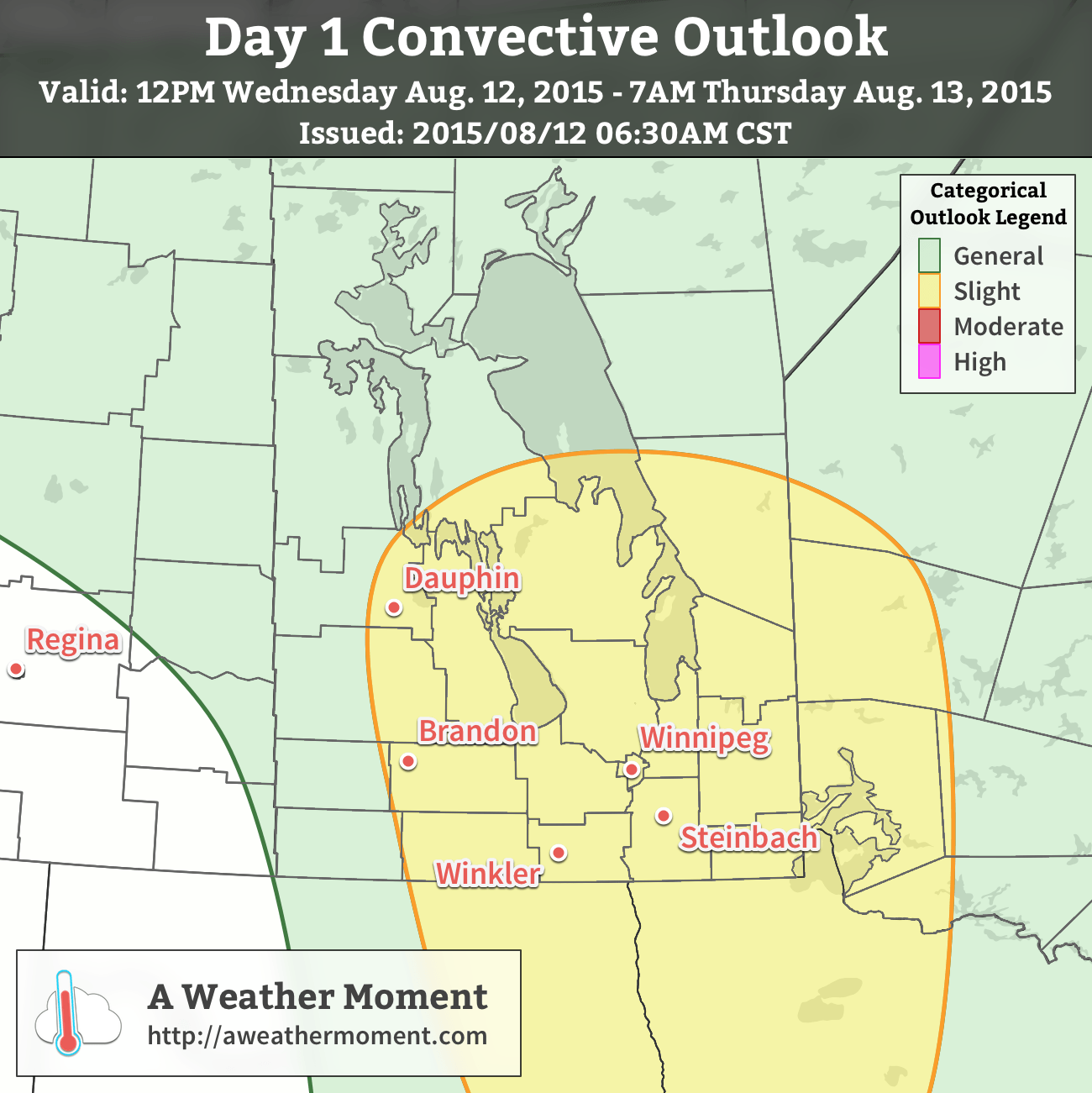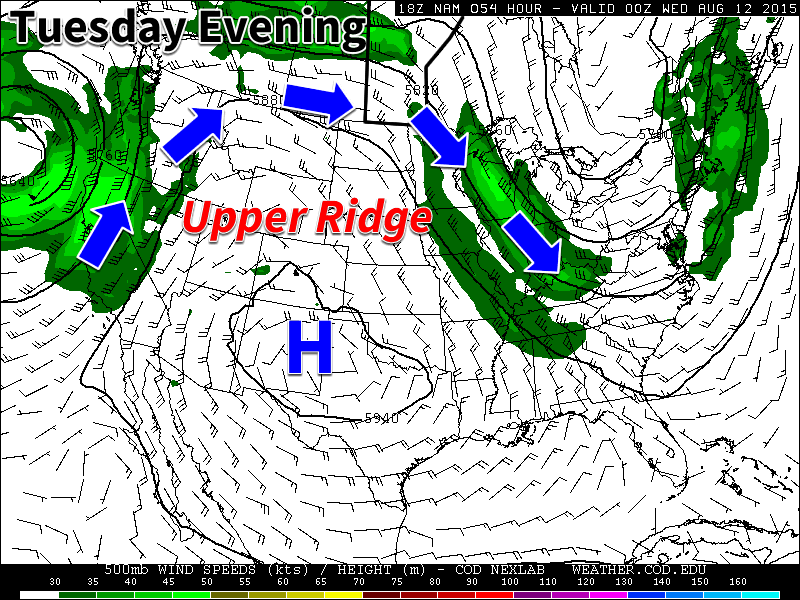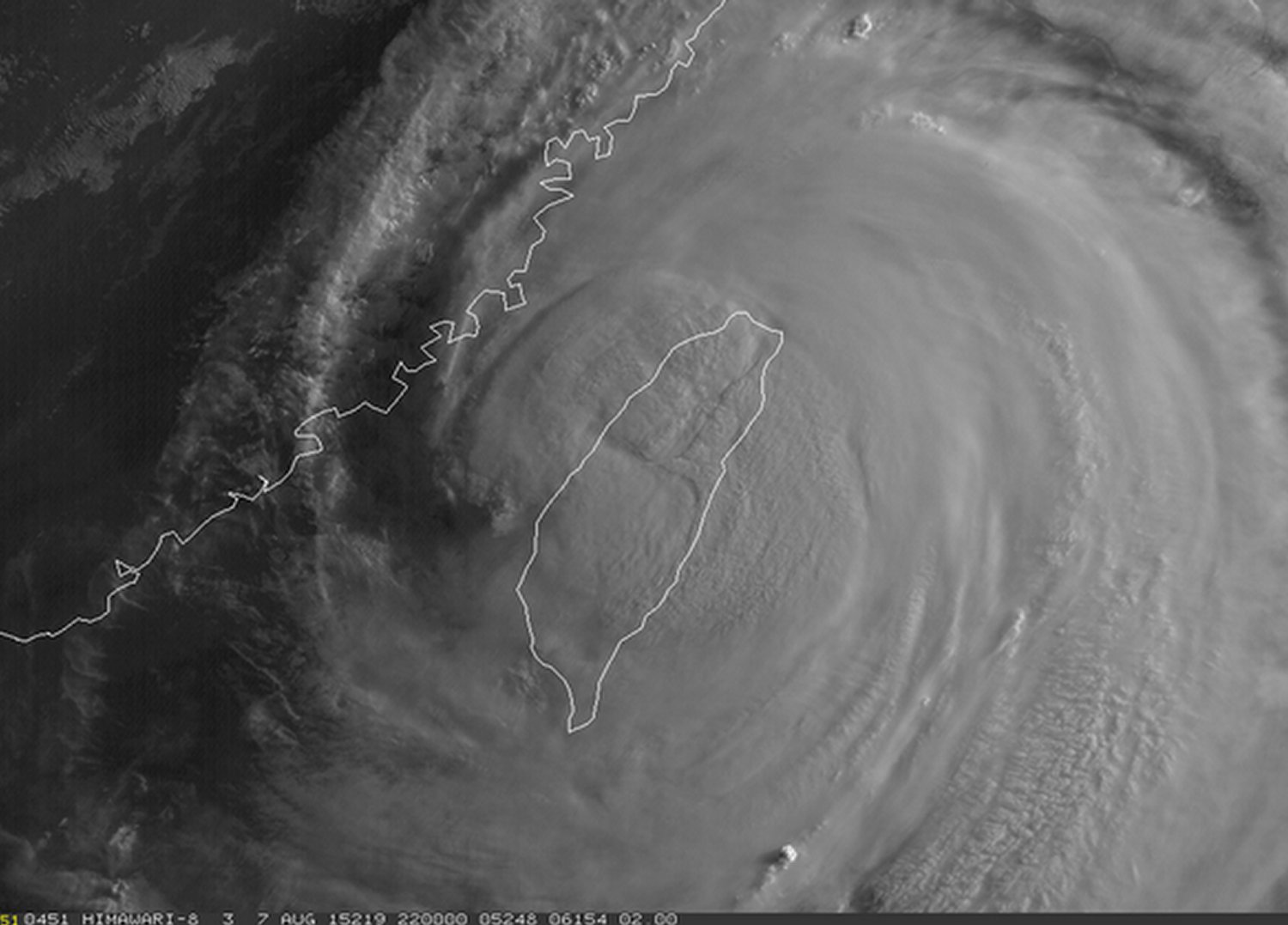The heat wave across Southern Manitoba will continue through today and tomorrow as even more warmth and humidity build into the region. Significantly cooler air will move into the area on Sunday, behind a cold front passage on Saturday that will bring another round of potentially severe weather to the province.
Friday: Hot With Increasing Humidity
Today will be a hot day with increasing humidity as a deep southerly flow develops ahead of a deepening low pressure system ejecting northeastwards out of Montana. Temperatures will climb into the low 30’s with high temperatures reaching around 32 or 33°C this afternoon. Winds will also pick up out of the south to around 40km/h with gustiness on top of that. The humidity will be less than some days of late, but still fairly moderate with dew point values in the 18–20°C range. This will make it feel more like more like 37–40.
Some afternoon clouds will be about associated with the low pressure system lifting NE out of Montana. No precipitation is expected, though.[1] We’ll have a very mild low temperature tonight of 21 or 22°C.
Cold Front Brings Severe Weather Threat for Saturday
Saturday’s weather story will be dominated by a cold front pushing eastwards across the Red River Valley. The southerly winds combined with pooling ahead of the cold front will make for very humid conditions with dew point values climbing to 23–24°C. With a high temperature near 33°C, it will feel more like the low 40’s and make for very uncomfortable conditions. As the cold front pushes eastwards, showers and/or thunderstorms are quite likely.
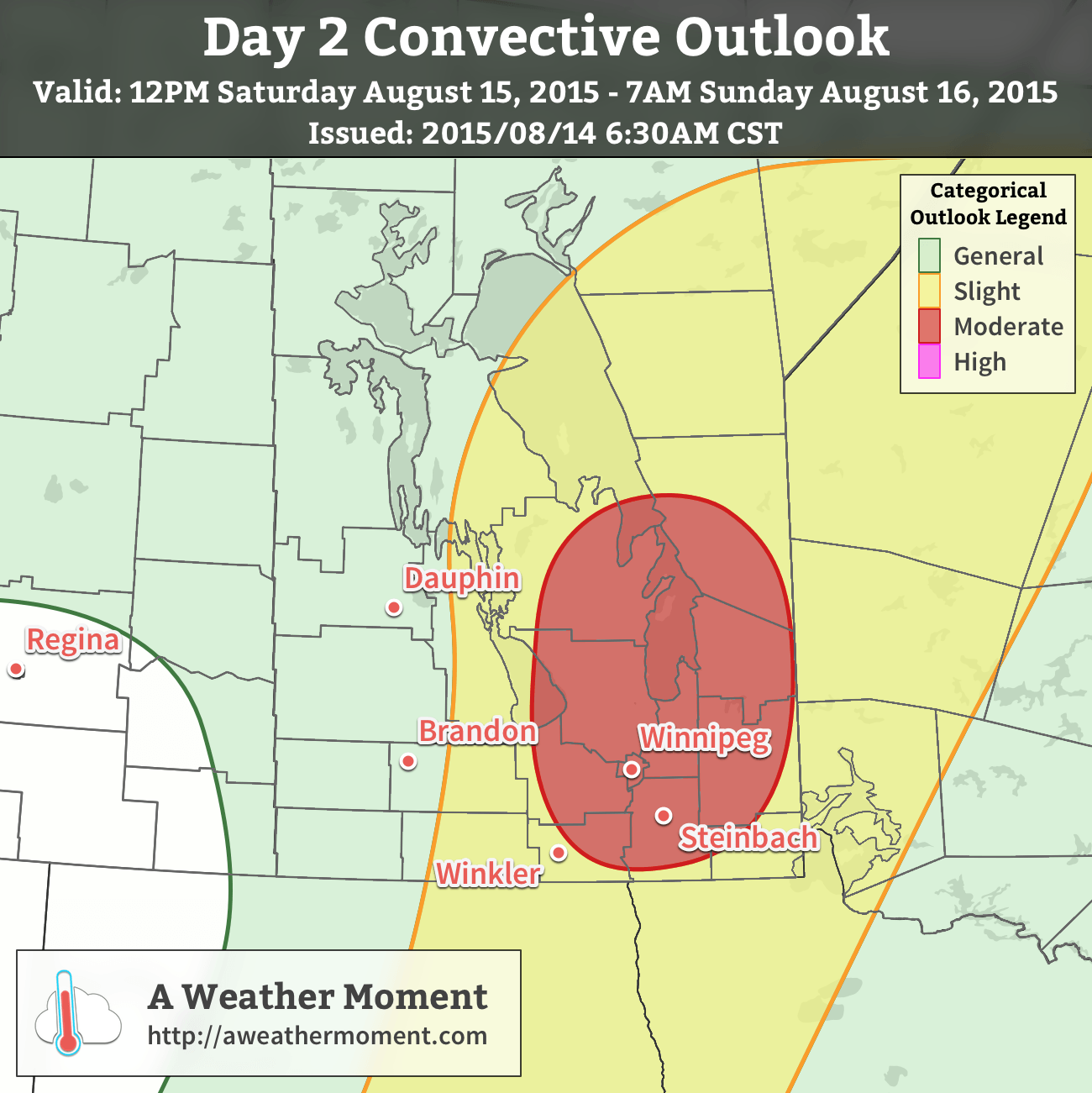
There are two possible outcomes for Saturday’s setup:
- Nocturnal advection develops in the Northern Plains of the United States and pushes northeastwards. Scattered showers and thunderstorms persist over the Red River Valley through much of the day before clearing out with the cold front.
- No or very little precipitation develops Friday night, leaving things dry and sunnier for Saturday. Severe thunderstorms would then be possible in the afternoon along the cold front.
At this point, it appears as if option 2 is the more plausible one. As always, looking at the MIST principles of thunderstorm development:
- Moisture: Abundant. A deep layer of dew points ≥ 20°C will be in place over the Red River Valley, resulting in tremendous amounts of fuel for thunderstorms.
- Instability: High. While the environment will be capped much of the day, significant instability will be in place through the mid- and upper-levels of the atmosphere. Steep mid-level lapse rates coupled with the high surface moisture will produce SBCAPE values in excess of 4000 J/kg and MLCAPE values of 3000–4000 J/kg.
- Shear: More than enough. In general, a 40kt jet at 500mb over the region will combine with surface winds out of the south at 10–15kt to create around 25–35kt of 0–6km bulk shear. Hodographs show strong curvature, indicating likely supercell storm mode.
- Trigger: The strong cold front pushing eastwards will provide focus for convection. While the capping inversion will hold surface-based convection back, the forcing from the frontal feature should be sufficient to initiate convection. 35–40kt southwesterly low-level jet may combine with steep mid-level lapse rates to produce elevated convection.
Given the extreme instability in place over the region (even elevated convection would have 1500+ J/kg of energy to work with), severe thunderstorms would be possible with either mode of convection. With the extremely high dew points in place, any thunderstorms that develop will be capable of torrential rainfall. Strong winds and large hail will be significant threats with any thunderstorms that develop. The threat of tornadoes cannot be ignored either; with strongly curved hodographs and such enormous amounts of energy, any supercell thunderstorms that develop would be capable of producing a tornado. The highest probability would be relatively close to the low pressure centre where the surface winds will be backed slightly more.
Saturday Severe Weather Update
Everything appears to be on track regarding today’s severe weather potential. There is a moderate risk of severe thunderstorms through much of the Red River Valley, Interlake and areas eastwards to the Ontario border. This includes large swaths of popular beaches & cottage country.
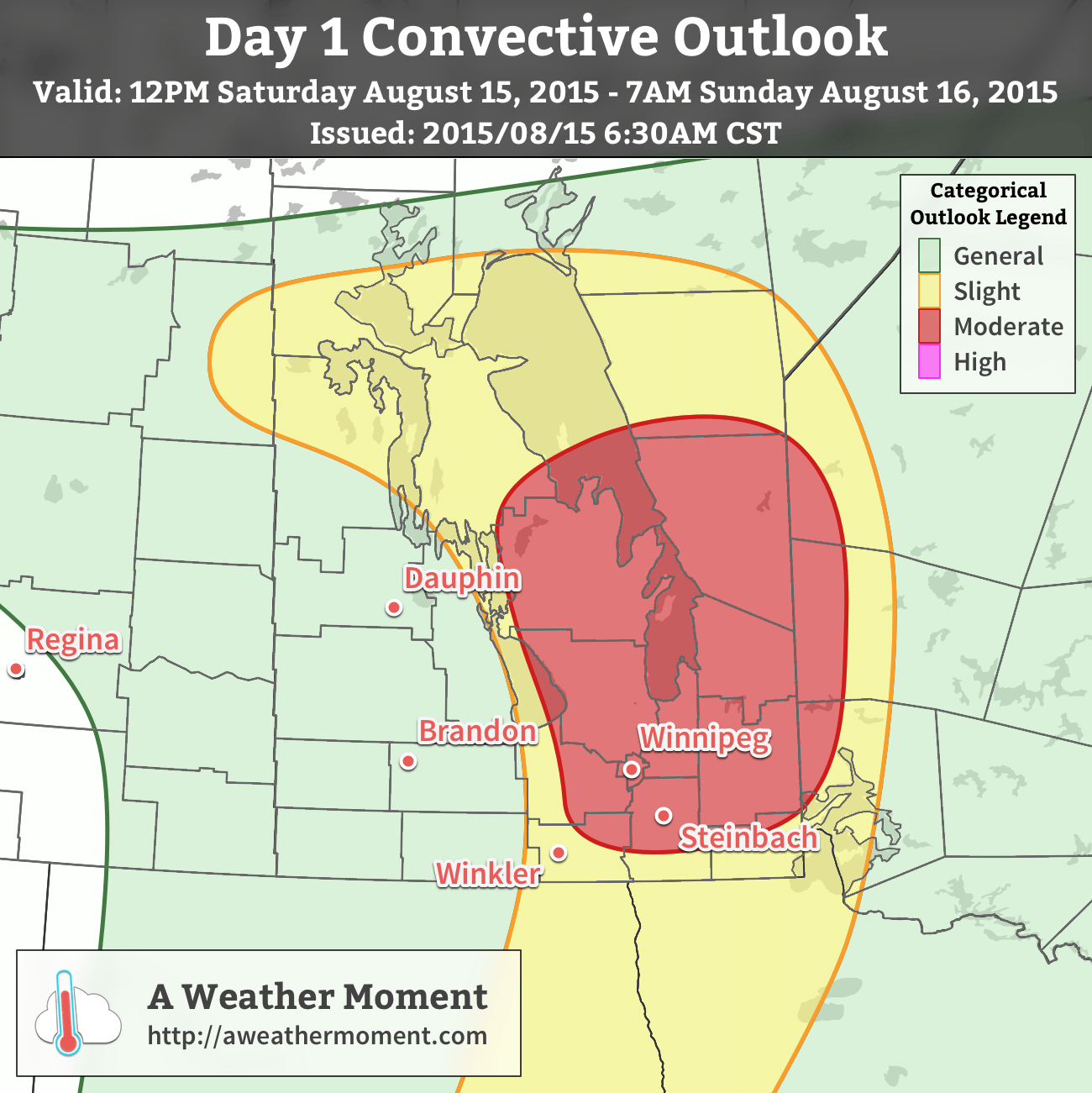
For the most part, all the expected conditions continue to pan out. Some elevated convection has developed overnight, however it doesn’t look like it will inhibit surface heating through the Red River Valley very much today. Very warm daytime highs in the low 30’s combined with dewpoint values in the 22-24°C range will combine to produce MLCAPE values of 2000-2500 J/kg and SBCAPE values exceeding 3000 J/kg. Combined with over 30 kt of 0-6km bulk shear and looping hodographs, there is sufficient energetics, dynamics and shear vectors to support strong supercell thunderstorms. Throughout the entire slight risk region, there will be a risk for large hail, strong winds and torrential downpours. Further north, in the moderate risk area, surface winds will be backed slightly more as the surface low pressure system continues moving northeastwards. Additionally, areas slightly further north will be closer to the upper-level jet and see enhanced 0-6km shear values. As such, any thunderstorms that develop in this region will pose a tornado threat, with the possibility of the production of a significant tornado today.
A strong cap in place will keep surface-based convection from triggering until late in the day as a trough pushes eastwards into the Red River Valley. Discrete supercell thunderstorms will likely develop between 4 and 6PM and then push east-northeastwards. As the line of thunderstorms pushes eastwards, upscale growth is likely as the system evolves into an MCS capable of all modes of severe weather.
Today could end up one of the most significant thunderstorm days of the year in Southern Manitoba. Stay aware of any watches and warnings issued by Environment Canada through the day today.
Sunday: A Cool Clean-Up
Sunday will bring partly cloudy skies on the back-side of the low as it departs Manitoba. Significantly cooler weather will be in place with daytime highs of just 23°C expected. There may be a slight chance of some light, isolated showers, but the threat looks minimal at this point. Temperatures will dip to around 12°C on Sunday night.
Next Week? Quick Rebound
Taking a quick peek at next week, it appears that the cool down will be short-lived as significantly warmer air begins pushing back into the region mid-week. Alongside the warmer temperatures will come the potential for more unsettled, stormy weather.
- A few showers may drift towards the Red River Valley from the NW this morning, however they should dissipate before it reaches our region. ↩
